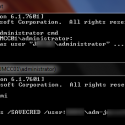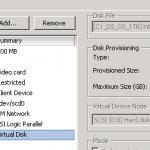I had inadvertently set up slave replication using the wrong channel name – which is a minor issue except that it caused some issues with an already configured Nagios check. To ‘change’ the channel name I stopped the slave process, removed all the slave definitions and used ‘CHANGE MASTER’ to re-create the slave from the appropriate starting point – as follows:
- STOP SLAVE;
- This willl stop the MySQL slave from getting updates from the master
- SHOW SLAVE STATUS\G
- Note the values for Relay_Master_Log_File and Exec_Master_Log_Pos to use in the CHANGE MASTER command below (although they may be the same do not use Master_Log_File
or Read_Master_Log_Pos as explained here)
- Note the values for Relay_Master_Log_File and Exec_Master_Log_Pos to use in the CHANGE MASTER command below (although they may be the same do not use Master_Log_File
- RESET SLAVE ALL;
- This will remove the currently configured replications shown in ‘SHOW SLAVE STATUS’
- CHANGE MASTER TO MASTER_HOST=’yourmasterdbserver.com’,MASTER_USER=’replication’,MASTER_PASSWORD=’opensesame’,MASTER_LOG_FILE=’dbl-bin.003188′, MASTER_LOG_POS=695823145 FOR CHANNEL ‘replication_channel_name’;
- START SLAVE;
- SHOW SLAVE STATUS\G
- You hopefully have a slave that is updating from the master with the channel name you wanted.

